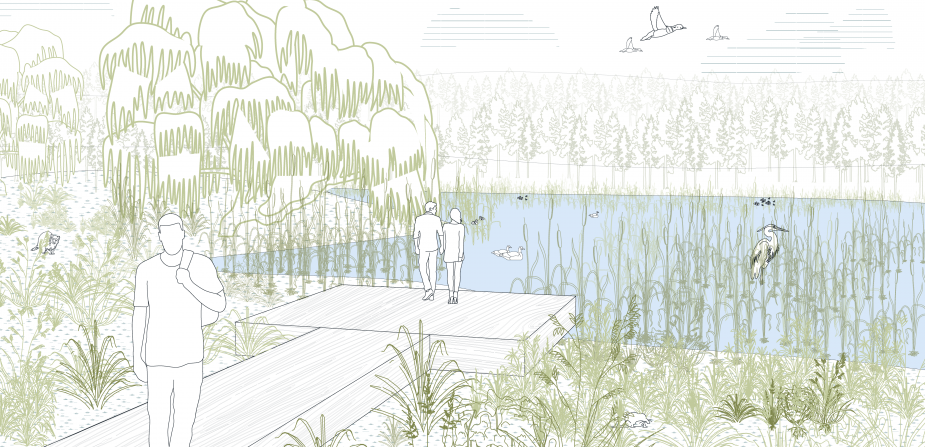Cover image by Brittany Hermanwan, Andrew Olsen, Ploy Piyawassopon
Landscape architects, architects, urban designers, planners, and civil engineers are professionals who design the environment around us. They are tasked with responding to complex issues such as climate change, climate resilience, social equity, housing, health, well-being, community building, environmental protection, sustainability, and social inclusion. Designers today need to be equipped with rigorous diagnostic tools to face the dynamic and evolving challenges of the 21st century. Designers need to be able to understand and analyze the status quo of complex environmental systems and processes to make wise forward-thinking design suggestions.
DES 430 Environment – Urban Form – Infrastructure provides students with the opportunity to observe, record and analyze the environment, urban form, and infrastructure from a holistic perspective through a series of investigations using analogue and digital drawing methods. This course investigates how different urban landscapes function globally at the site, block, city, and regional scale. Students will learn a multisensory approach to study the environment above (atmosphere), on (ground/at grade), below (profile) and around (context).
Students will gain analytical knowledge through readings, lectures, and practice visual thinking (visual literacy) and multisensory thinking (multisensorial literacy) through in-class exercises and weekly assignments increasing in complexity. This blog is intended to showcase and collect work produced throughout the semester.
To read more about publications and other academic articles by Prof. Daniel Roehr, please visit Research Gate.
